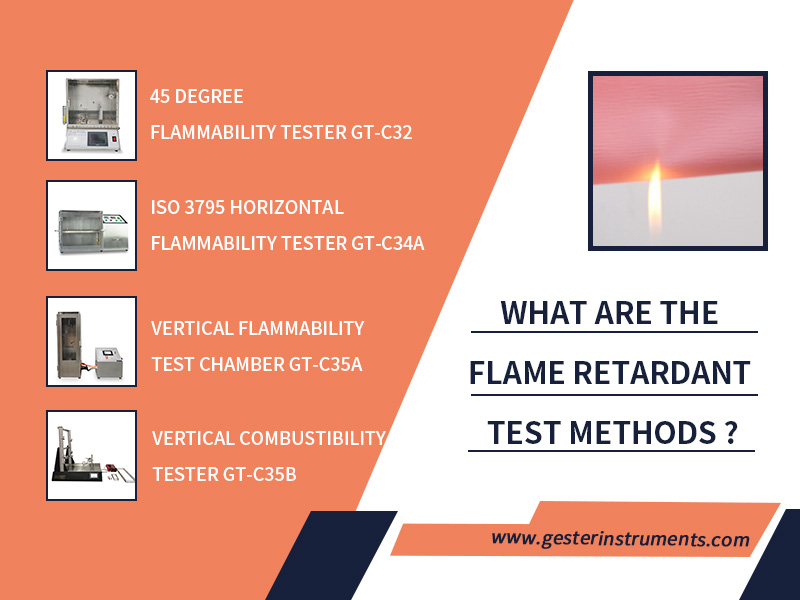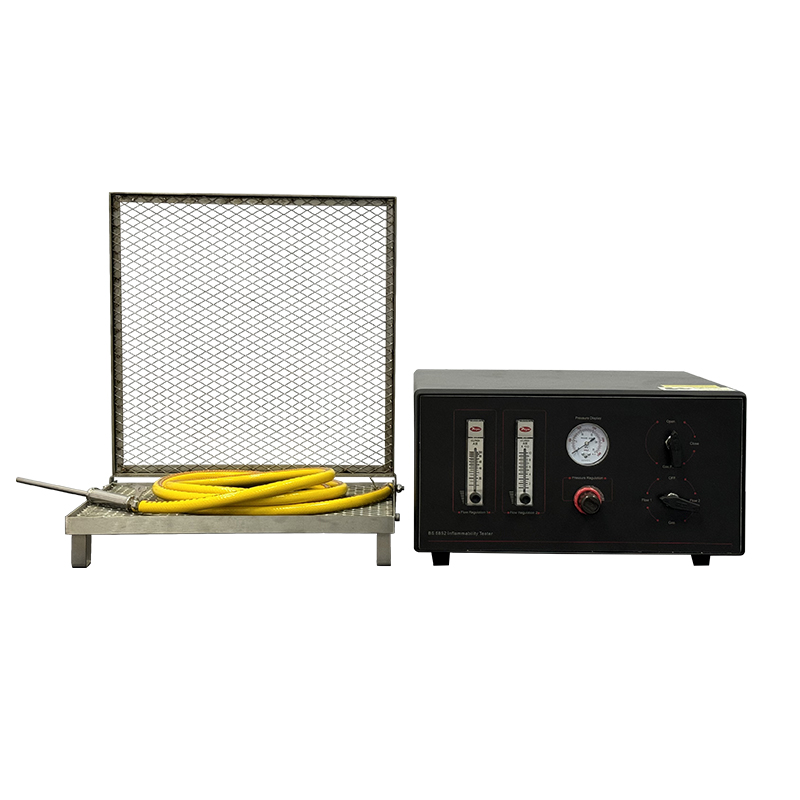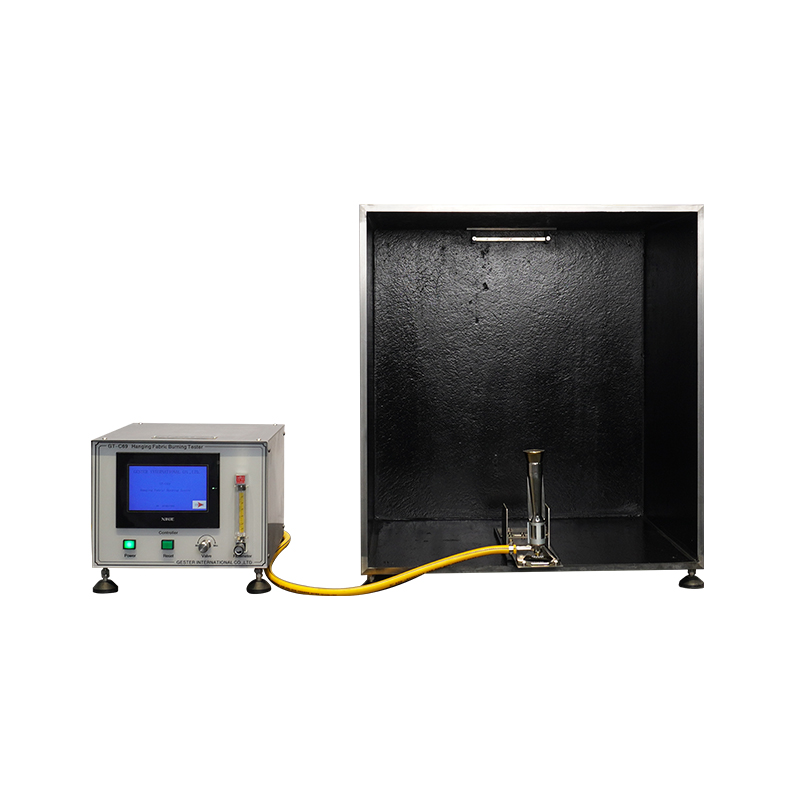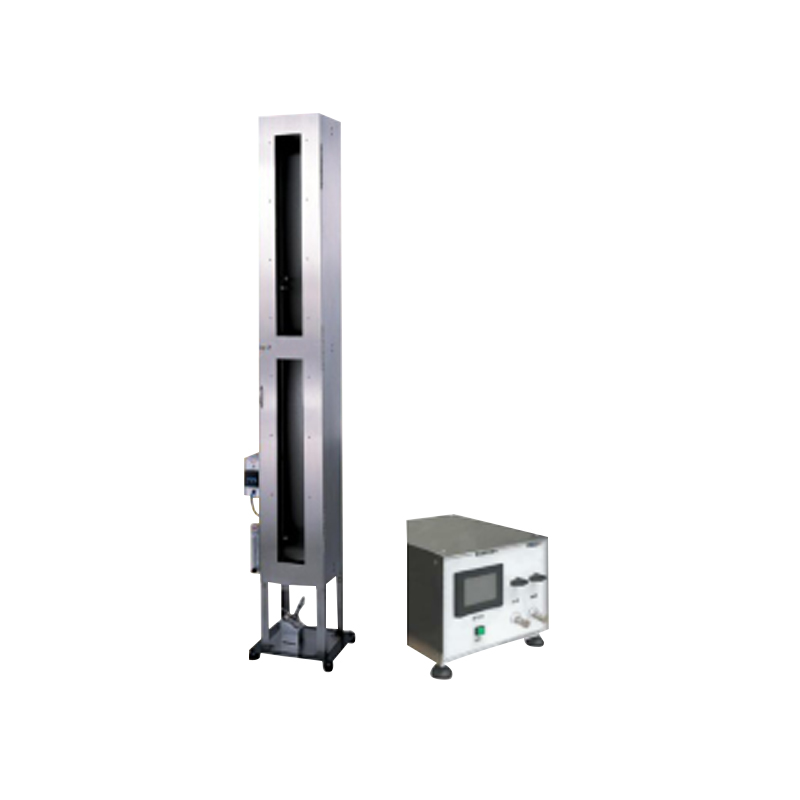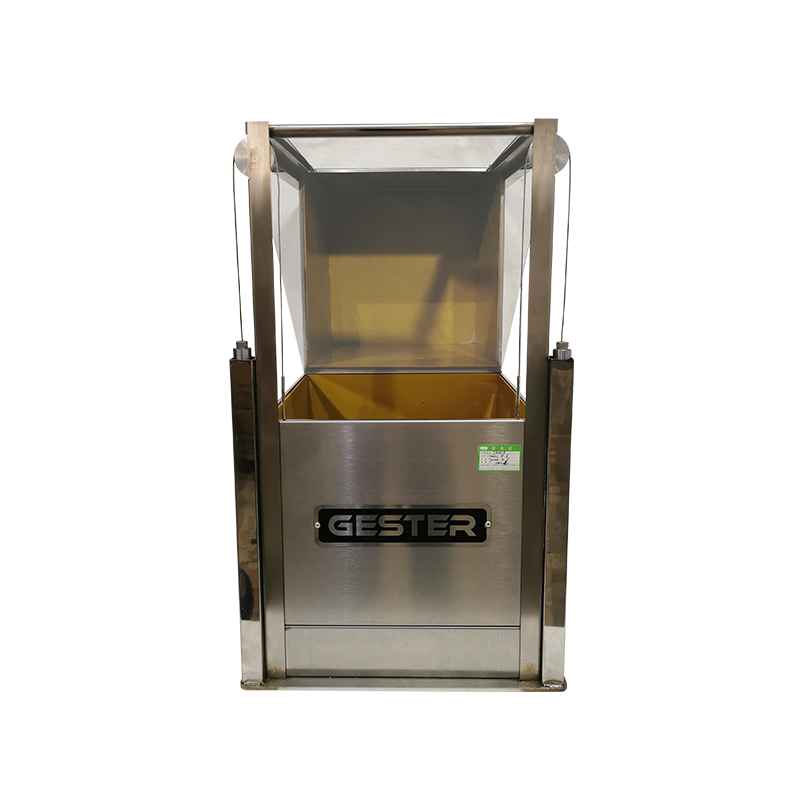Flame retardancy testing is a test method to determine the ability of the object under test to delay the continuation, spread and propagation of flame. After years of development, flame retardancy testing has formed a variety of standards, and has become a very important test item in the related industry.
This article will introduce several common textile flame retardant test methods, including 45 Degree Flammability Test Method, Horizontal Flammability Test Method, Vertical Flammability Test Method, and other flame retardant test methods.
Flame retardant fabrics are fabrics that do not burn when exposed to an ignition source, or burn very slowly and extinguish themselves within a certain period of time. This kind of fabric usually undergoes special treatment to make it with flame retardant performance to protect people's life and property safety.
Commonly used textile flame retardant materials: permanent flame retardant polyester, modified acrylic, aramid, aramid, polyimide, carbon fibre, glass fibre, pre-oxygenated fibre.
1.45 Degree Flammability Test mathod
This test method stipulates that the specimen is placed at an angle of 45° (the length of the specimen is at an angle of 45° with the horizontal plane), and the combustion source is ignited on the upper or lower surface below the specimen. The time required for the specimen to burn upwards a certain distance is measured, or the time required for the specimen to burn upwards, the flame retardation time, the flame spread rate, the charred length, the charred area or the number of times the quantity sample needs to be exposed to flame at a certain distance from the lower end of the specimen. The 45° inclination method is mainly used to test the flame retardancy of fabrics such as carpets.
Test Equipment:
45 Degree Flammability Tester GT-C32
45 Degree Flammability Tester to determine the burning characteristics of textiles under controlled conditions. This test method covers the evaluation of the flammability of textile fabrics as they reach the consumer for or from apparel other than children’s sleepwear or protective clothing.
Standards
ASTM D 1230, ASTM F963, 16 CFR -1610, CALIF TB 117,
CAN/CGSB 4.2 No 27.5, GB/T 14644
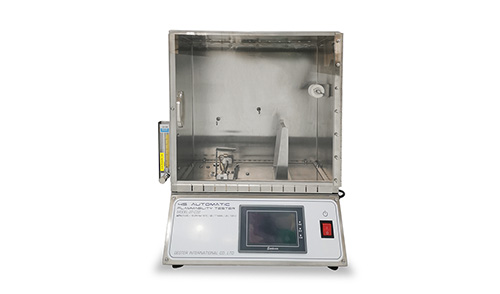
2. Horizontal Flammability Test Method
This test method stipulates that the specimen is placed horizontally, ignited at the head end of the specimen, the distance the flame spreads on the specimen is measured and the time required to spread the distance is measured, the rate of burning is calculated and the rate of burning is used to characterise the flame retardancy of the fabric. The horizontal method is mainly used to test the flame retardancy of automotive interior materials.
Test Equipment:
ISO 3795 Horizontal Flammability Tester GT-C34A
Mainly used for determining the horizontal burning rate of materials used in the occupant compartment of road vehicles ( for example, passenger cars, lorries/trucks ,estate cars, coaches ), and of tractors and machinery for agriculture and forestry, after exposure to a small flame.
Standards
ASTM D5132, ISO 3795, FMVSS 302 , JIS D1201, FZ/T 01028, GB/T 8410, GB/T20953, SAE J369, GMW3232
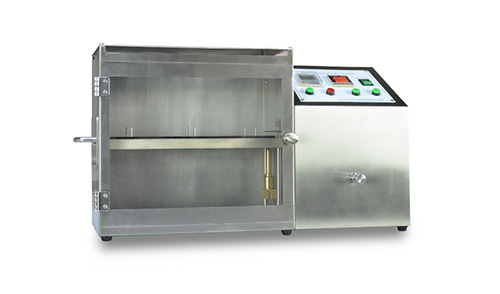
3. Vertical Flammability Test Method
The method specifies that the specimen is placed vertically (the length of the specimen is perpendicular to the horizontal line) and the combustion source ignites the specimen below the specimen. The test specimen is tested for the shortest ignition time, renewal time, flame retardant time, flame spread rate, charred length (damaged length), charred area (damaged area) and other indicators related to flame retardancy. This Vertical combustion method is mainly used to test the flame retardancy of textiles for clothing, curtains and other fabrics.
Test Equipment:
3.1 ASTM D6413 Vertical Flammability Test Chamber GT-C35A
To measuring the vertical flame spread for children’s sleepwear, fabrics, other textile materials or resilient filling materials used in upholstered furniture of textiles.
Standards
CFR1615, CFR1616, GB/T 5455, ASTM D6413

3.2 Vertical Combustibility Tester GT-C35B
This Vertical Combustibility Tester to determine the flammability resistance of vertically oriented fabrics and soft fabric toys.
Standards
BS EN ISO 6940, 6941,15025, 14116,
GB/T 5456,8746, BS 5438,
BS EN 1101,1102, 1103, BS EN 14878,
BS 5722, AS/NZS 1249, ISO 10047

4. Other Flame Resistance Test Methods and Instruments
BS 5852 Inflammability Tester Upholstery Flammability Test Rig is widely used in Europe and American upholstered furniture’s flame retardant property test, it’s used in concert with 0-7 fire source, standard fabric and sponge,etc.To test the combustion performance.
Flame retardancy testing is an important means of evaluating the flame retardancy of materials. Through the 45 Degree Flammability Test Method, Horizontal Flammability Test Method, Vertical Flammability Test Method, and other flame retardant test methods, we can gain a comprehensive understanding of the combustion characteristics of the materials under fire conditions.
When conducting the tests, attention needs to be paid to the requirements of the test samples, the test environment, the test process and the test equipment to ensure the accuracy and reliability of the test results. These test methods can provide a scientific basis for the design of fire performance of products, fire risk assessment and the formulation of fire safety measures.

